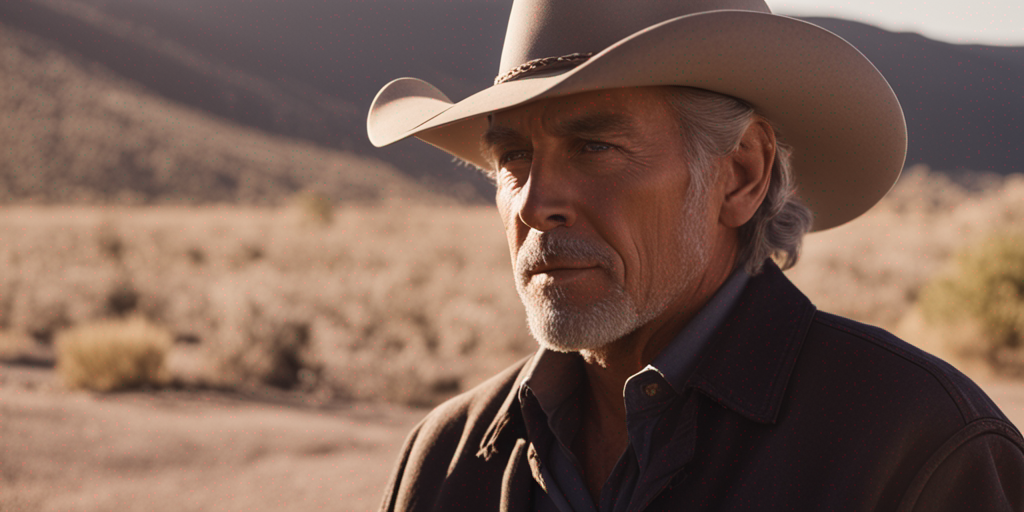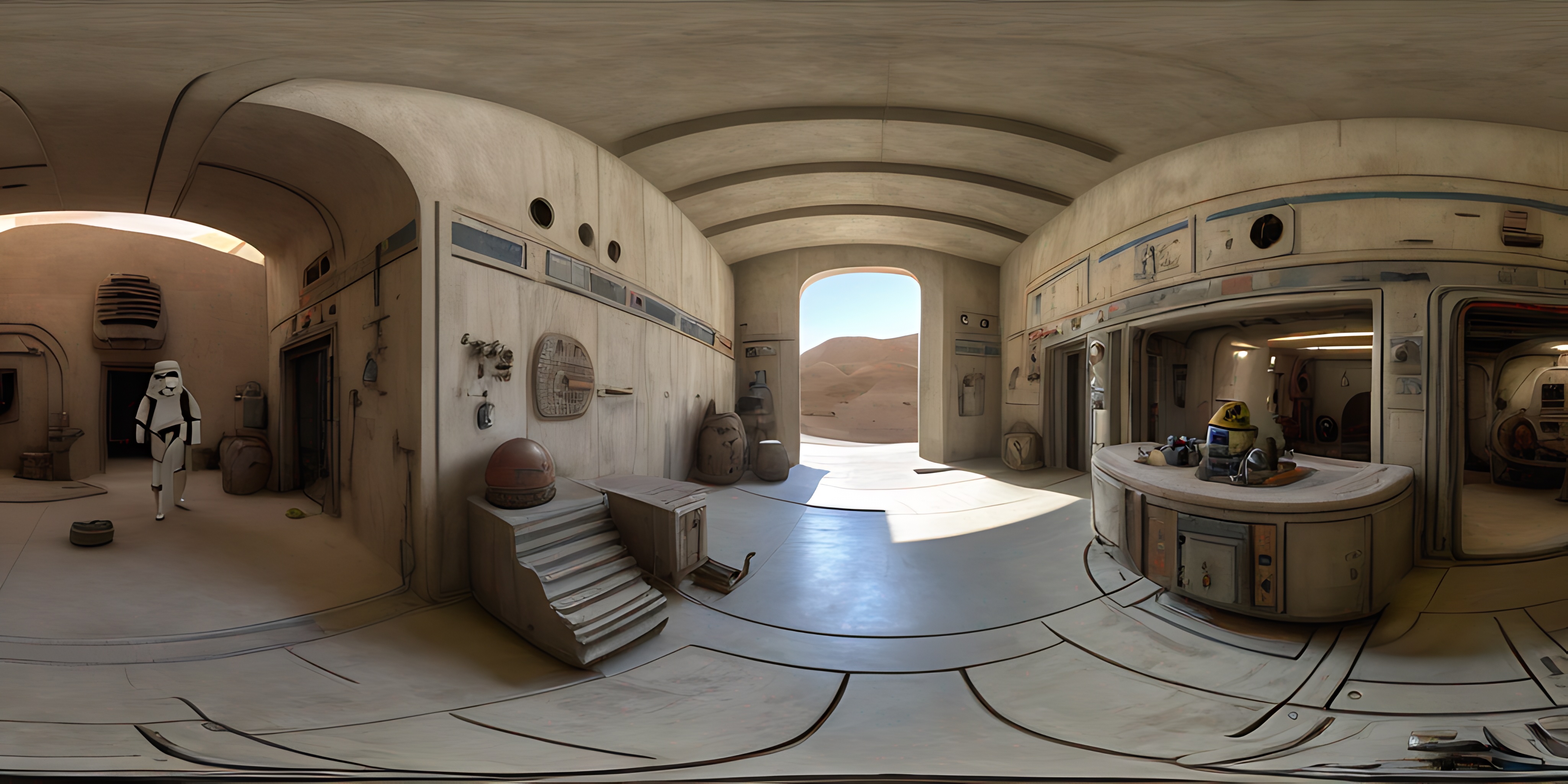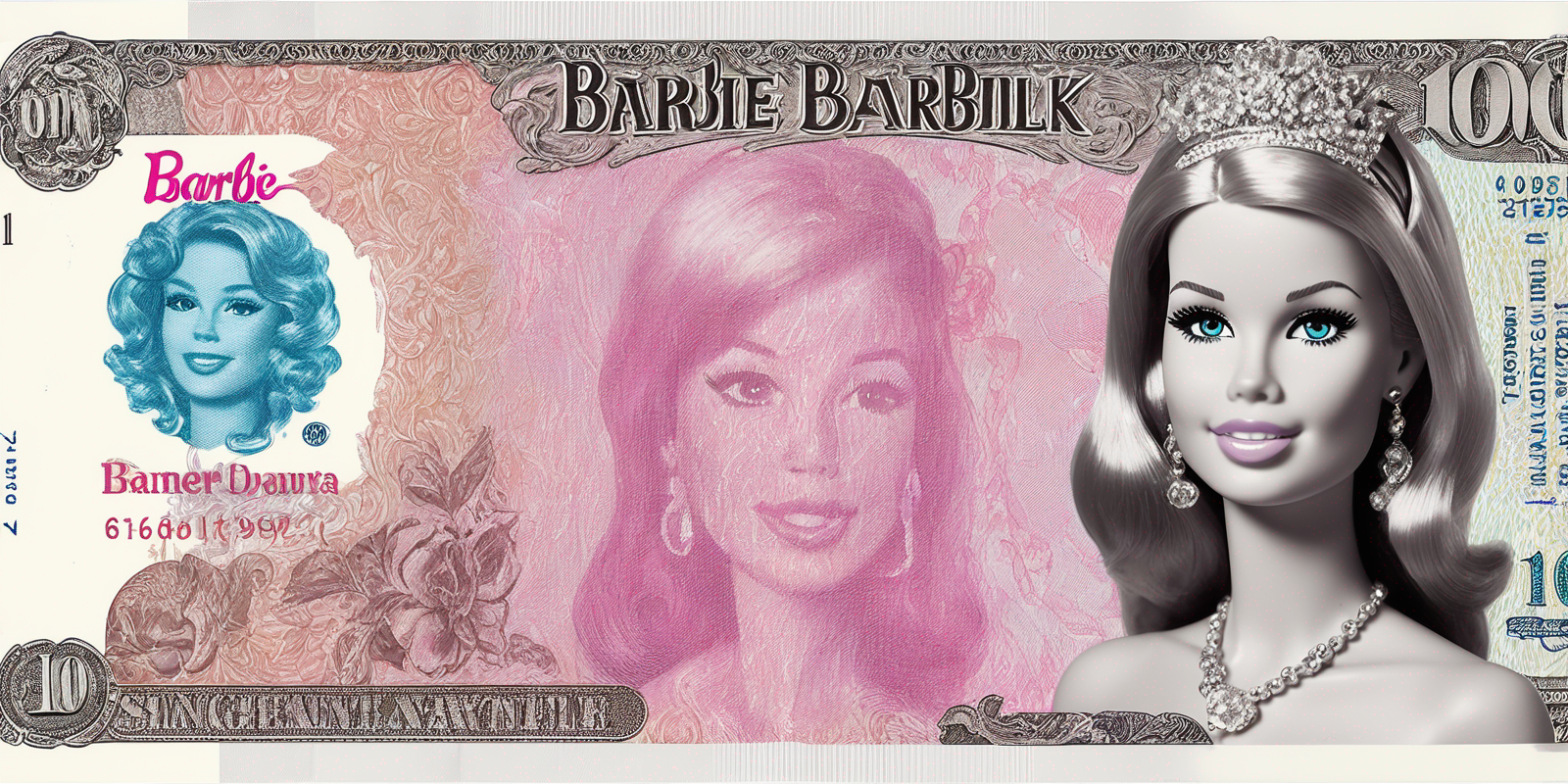sdxl-cinematic-2
Maintainer: jbilcke

1

| Property | Value |
|---|---|
| Run this model | Run on Replicate |
| API spec | View on Replicate |
| Github link | No Github link provided |
| Paper link | No paper link provided |
Create account to get full access
Model overview
sdxl-cinematic-2 is a variation of the Stable Diffusion XL (SDXL) model, developed by the maintainer jbilcke. It is designed to generate cinematic and visually striking images. The model builds upon the capabilities of the original SDXL model, with customizations that aim to produce more immersive and atmospheric visual outputs. Similar models like [object Object], [object Object], and [object Object] explore related image generation capabilities.
Model inputs and outputs
sdxl-cinematic-2 takes a variety of inputs, including an image, a prompt, and optional parameters like seed, width, height, and scheduler. The model can generate one or more output images based on the provided inputs.
Inputs
- Prompt: The text prompt that describes the desired image.
- Negative prompt: Additional text to guide the model away from unwanted elements.
- Image: An input image to be used for image-to-image or inpainting tasks.
- Mask: A mask for the input image, used in inpainting mode.
- Width and height: The desired dimensions of the output image.
- Seed: A random seed value to control the image generation process.
- Refine: The type of refinement to apply to the generated image.
- Scheduler: The algorithm used to schedule the denoising steps.
- Lora scale: The additive scale for LoRA (Low-Rank Adaptation) models.
- Num outputs: The number of images to generate.
- Refine steps: The number of refinement steps to apply.
- Guidance scale: The scale for classifier-free guidance.
- Apply watermark: Whether to apply a watermark to the generated images.
- High noise frac: The fraction of high noise to use for the expert ensemble refiner.
Outputs
- Output images: One or more generated images, returned as URIs.
Capabilities
sdxl-cinematic-2 is capable of generating highly detailed and visually immersive images. The model's cinematic style lends itself well to the creation of atmospheric scenes, dramatic landscapes, and fantastical environments. By leveraging the power of Stable Diffusion, the model can produce a wide range of image types, from photorealistic to surreal and imaginative.
What can I use it for?
The sdxl-cinematic-2 model can be used for a variety of creative and artistic applications, such as concept art, illustration, visual effects, and game development. Its ability to generate cinematic-style images makes it a valuable tool for filmmakers, photographers, and visual storytellers. Additionally, the model's flexibility allows it to be used in a range of commercial and personal projects, from advertising and marketing to personal creative expression.
Things to try
Experiment with different prompts and input parameters to see how they affect the generated images. Try combining sdxl-cinematic-2 with other models, such as BLIP-2, to explore more advanced image-to-text and image-to-image tasks. You can also try using the model for image inpainting or image-to-image tasks, leveraging the provided mask and image input options.
This summary was produced with help from an AI and may contain inaccuracies - check out the links to read the original source documents!
Related Models

sdxl-davinci

5
sdxl-davinci is a fine-tuned version of the SDXL model, created by cbh123, that has been trained on Davinci drawings. This model is similar to other SDXL models like sdxl-allaprima, sdxl-shining, sdxl-money, sdxl-victorian-illustrations, and sdxl-2004, which have been fine-tuned on specific datasets to capture unique artistic styles and visual characteristics. Model inputs and outputs The sdxl-davinci model accepts a variety of inputs, including an image, prompt, and various parameters to control the output. The model can generate images based on the provided prompt, or perform tasks like image inpainting and refinement. The output is an array of one or more generated images. Inputs Prompt**: The text prompt that describes the desired image Image**: An input image to be used for tasks like img2img or inpainting Mask**: An input mask for the inpaint mode, where black areas will be preserved and white areas will be inpainted Width/Height**: The desired dimensions of the output image Seed**: A random seed value to control the image generation Refine**: The type of refinement to apply to the generated image Scheduler**: The scheduler algorithm to use for image generation LoRA Scale**: The scale to apply to any LoRA components Num Outputs**: The number of images to generate Refine Steps**: The number of refinement steps to apply Guidance Scale**: The scale for classifier-free guidance Apply Watermark**: Whether to apply a watermark to the generated image High Noise Frac**: The fraction of high noise to use for the expert_ensemble_refiner Negative Prompt**: An optional negative prompt to guide the image generation Outputs An array of one or more generated images Capabilities sdxl-davinci can generate a variety of artistic and illustrative images based on the provided prompt. The model's fine-tuning on Davinci drawings allows it to capture a unique and expressive style in the generated outputs. The model can also perform image inpainting and refinement tasks, allowing users to modify or enhance existing images. What can I use it for? The sdxl-davinci model can be used for a range of creative and artistic applications, such as generating illustrations, concept art, and digital paintings. Its ability to work with input images and masks makes it suitable for tasks like image editing, restoration, and enhancement. Additionally, the model's varied capabilities allow for experimentation and exploration of different artistic styles and compositions. Things to try One interesting aspect of the sdxl-davinci model is its ability to capture the expressive and dynamic qualities of Davinci's drawing style. Users can experiment with different prompts and input parameters to see how the model interprets and translates these artistic elements into unique and visually striking outputs. Additionally, the model's inpainting and refinement capabilities can be used to transform or enhance existing images, opening up opportunities for creative image manipulation and editing.
Updated Invalid Date

sdxl-panorama

1
The sdxl-panorama model is a version of the Stable Diffusion XL (SDXL) model that has been fine-tuned for panoramic image generation. This model builds on the capabilities of similar SDXL-based models, such as sdxl-recur, sdxl-controlnet-lora, sdxl-outpainting-lora, sdxl-black-light, and sdxl-deep-down, each of which focuses on a specific aspect of image generation. Model inputs and outputs The sdxl-panorama model takes a variety of inputs, including a prompt, image, seed, and various parameters to control the output. It generates panoramic images based on the provided input. Inputs Prompt**: The text prompt that describes the desired image. Image**: An input image for img2img or inpaint mode. Mask**: An input mask for inpaint mode, where black areas will be preserved and white areas will be inpainted. Seed**: A random seed to control the output. Width and Height**: The desired dimensions of the output image. Refine**: The refine style to use. Scheduler**: The scheduler to use for the diffusion process. LoRA Scale**: The LoRA additive scale, which is only applicable on trained models. Num Outputs**: The number of images to output. Refine Steps**: The number of steps to refine, which defaults to num_inference_steps. Guidance Scale**: The scale for classifier-free guidance. Apply Watermark**: A boolean to determine whether to apply a watermark to the output image. High Noise Frac**: The fraction of noise to use for the expert_ensemble_refiner. Negative Prompt**: An optional negative prompt to guide the image generation. Prompt Strength**: The prompt strength when using img2img or inpaint mode. Num Inference Steps**: The number of denoising steps to perform. Outputs Output Images**: The generated panoramic images. Capabilities The sdxl-panorama model is capable of generating high-quality panoramic images based on the provided inputs. It can produce detailed and visually striking landscapes, cityscapes, and other panoramic scenes. The model can also be used for image inpainting and manipulation, allowing users to refine and enhance existing images. What can I use it for? The sdxl-panorama model can be useful for a variety of applications, such as creating panoramic images for virtual tours, film and video production, architectural visualization, and landscape photography. The model's ability to generate and manipulate panoramic images can be particularly valuable for businesses and creators looking to showcase their products, services, or artistic visions in an immersive and engaging way. Things to try One interesting aspect of the sdxl-panorama model is its ability to generate seamless and coherent panoramic images from a variety of input prompts and images. You could try experimenting with different types of scenes, architectural styles, or natural landscapes to see how the model handles the challenges of panoramic image generation. Additionally, you could explore the model's inpainting capabilities by providing partial images or masked areas and observing how it fills in the missing details.
Updated Invalid Date

sdxl-lightning-4step

453.2K
sdxl-lightning-4step is a fast text-to-image model developed by ByteDance that can generate high-quality images in just 4 steps. It is similar to other fast diffusion models like AnimateDiff-Lightning and Instant-ID MultiControlNet, which also aim to speed up the image generation process. Unlike the original Stable Diffusion model, these fast models sacrifice some flexibility and control to achieve faster generation times. Model inputs and outputs The sdxl-lightning-4step model takes in a text prompt and various parameters to control the output image, such as the width, height, number of images, and guidance scale. The model can output up to 4 images at a time, with a recommended image size of 1024x1024 or 1280x1280 pixels. Inputs Prompt**: The text prompt describing the desired image Negative prompt**: A prompt that describes what the model should not generate Width**: The width of the output image Height**: The height of the output image Num outputs**: The number of images to generate (up to 4) Scheduler**: The algorithm used to sample the latent space Guidance scale**: The scale for classifier-free guidance, which controls the trade-off between fidelity to the prompt and sample diversity Num inference steps**: The number of denoising steps, with 4 recommended for best results Seed**: A random seed to control the output image Outputs Image(s)**: One or more images generated based on the input prompt and parameters Capabilities The sdxl-lightning-4step model is capable of generating a wide variety of images based on text prompts, from realistic scenes to imaginative and creative compositions. The model's 4-step generation process allows it to produce high-quality results quickly, making it suitable for applications that require fast image generation. What can I use it for? The sdxl-lightning-4step model could be useful for applications that need to generate images in real-time, such as video game asset generation, interactive storytelling, or augmented reality experiences. Businesses could also use the model to quickly generate product visualization, marketing imagery, or custom artwork based on client prompts. Creatives may find the model helpful for ideation, concept development, or rapid prototyping. Things to try One interesting thing to try with the sdxl-lightning-4step model is to experiment with the guidance scale parameter. By adjusting the guidance scale, you can control the balance between fidelity to the prompt and diversity of the output. Lower guidance scales may result in more unexpected and imaginative images, while higher scales will produce outputs that are closer to the specified prompt.
Updated Invalid Date

sdxl-money

5
sdxl-money is a Stable Diffusion XL (SDXL) model fine-tuned on currencies by the maintainer cbh123. This model is similar to other SDXL models like sdxl-shining, sdxl-custom-model, sdxl-betterup, and the base sdxl model, all of which have been fine-tuned or enhanced for various use cases. Model inputs and outputs The sdxl-money model takes a variety of inputs including a prompt, an optional image for image-to-image or inpainting tasks, a seed, and parameters like width, height, guidance scale, and number of inference steps. The model outputs one or more images based on the inputs. Inputs Prompt**: The text prompt describing the image to be generated Image**: An optional input image for image-to-image or inpainting tasks Seed**: A random seed to control image generation Width/Height**: The desired dimensions of the output image Guidance Scale**: A parameter to control the strength of the text prompt Num Inference Steps**: The number of denoising steps for the image generation Outputs Images**: One or more output images based on the provided inputs Capabilities The sdxl-money model is capable of generating high-quality images of various financial and currency-related scenes, such as banknotes, coins, and financial transactions. The fine-tuning on currencies allows the model to produce realistic and detailed depictions of monetary subjects. What can I use it for? You can use sdxl-money to generate images for financial applications, educational materials, or artistic projects involving currencies and money. The model could be useful for designers, illustrators, or anyone needing currency-themed visuals. Things to try Try providing the model with prompts related to different currencies, financial instruments, or economic concepts. Experiment with the input parameters to see how they affect the output, such as adjusting the guidance scale to change the level of detail in the generated images.
Updated Invalid Date